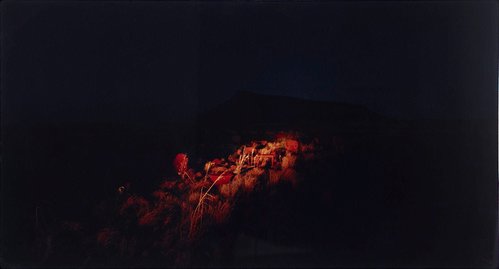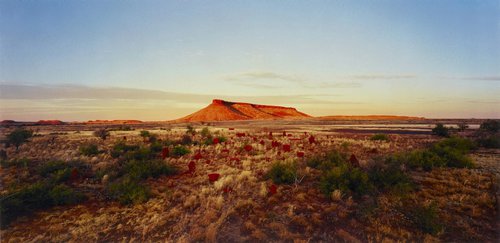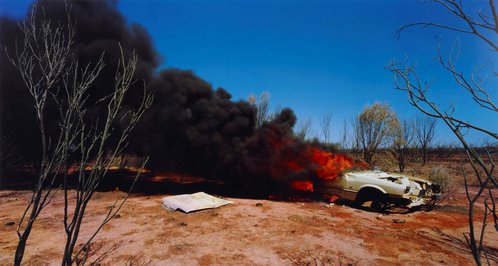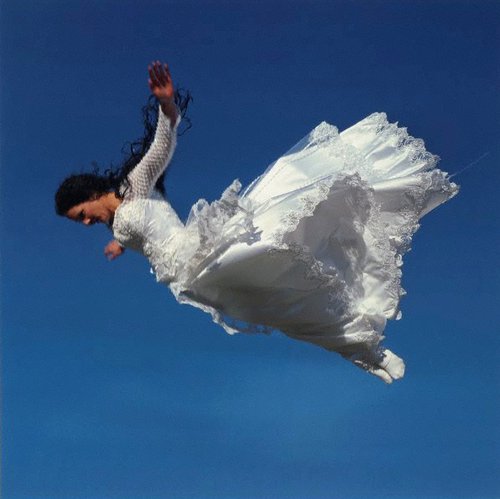-
Details
- Date
- 2010
- Media category
- Photograph
- Materials used
- type C print
- Edition
- 4/8
- Dimensions
- 127.0 x 241.0 cm frame
- Credit
- Donated through the Australian Government’s Cultural Gifts Program by Dr Clinton Ng and Steven Johnston 2023
- Location
- Not on display
- Accession number
- 144.2023
- Copyright
- © Rosemary Laing
- Artist information
-
Rosemary Laing
Works in the collection
- Share
-
-
About
Continuing her longstanding preoccupation with human-made or altered environments, Rosemary Laing’s series leak 2010 is a densely metaphorical yet acutely readable parable.
Aristide, like the other photographs in this series, depicts a skeleton of house that has landed on the side of a mound in the pastoral landscape of the Cooma-Monaro district of New South Wales. Or, quite possibly, it has grown out of it like a tumour that is about to spread and destroy this ostensibly idyllic landscape - once an inspiration for painters George Lambert, Hilda Rix Nicholas and photographer David Moore and the setting for Patrick White’s The Twyborn Affair.
Laing’s photographs have often explicitly referred to colonial responses to the Australian land, most notably in the series groundspeed 2001 and one dozen unnatural disasters in the Australian landscape 2003. However, if these earlier works focused on the incongruous attempts of settler culture to blend in with the land, the very opposite occurs in Laing’s Aristide. Here, the landscape is subjugated and on the verge of a destructive metamorphosis. Laing depicts this dramatic condition by highlighting the violent clash of the romantic forms of the tree and mound with the anachronistically rigid, geometric shapes of the timber frame.
Forgoing digital manipulation, the photographer wills this surreal spill-over into being by constructing the actual house frame (in 1.8:1 scale), thus bringing the allegory uncomfortably close to the fabric of reality. Furthermore, the suburban house, which has been the cornerstone of the Australian dream, is literally turned upside down as the photograph can be shown either way - upturning the house or the landscape.
This confusion of the phenomenological relationships is the photographer’s way of questioning whether a balancing act between nature and humanity is a possibility or a perpetual predicament. Laing has analysed the various aspects of this quandary within the Australian context since her 1995 series greenwork.



